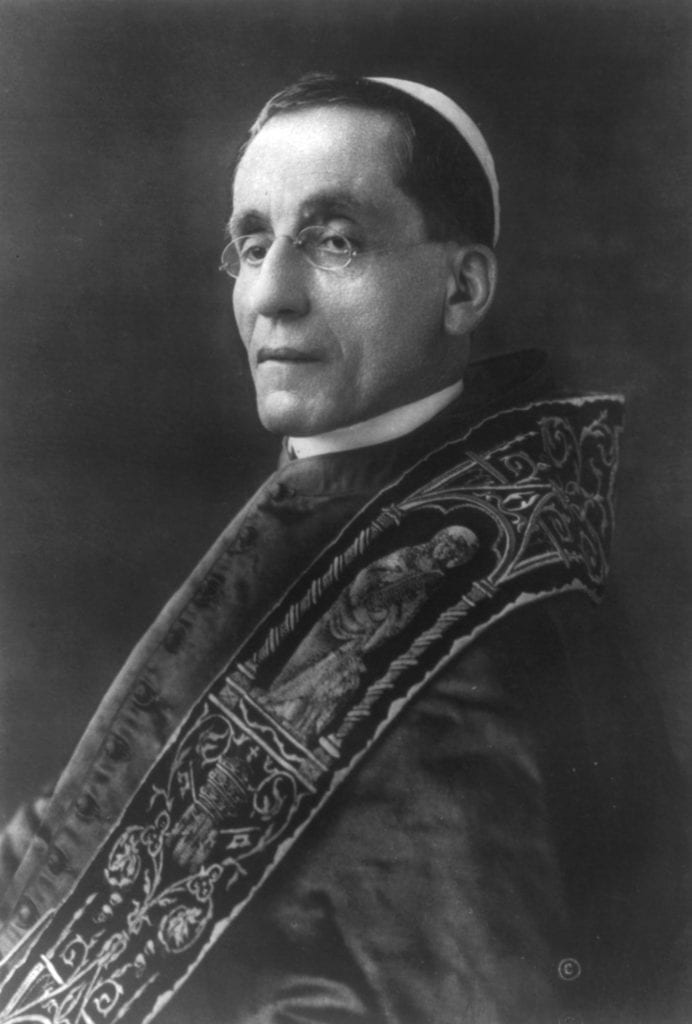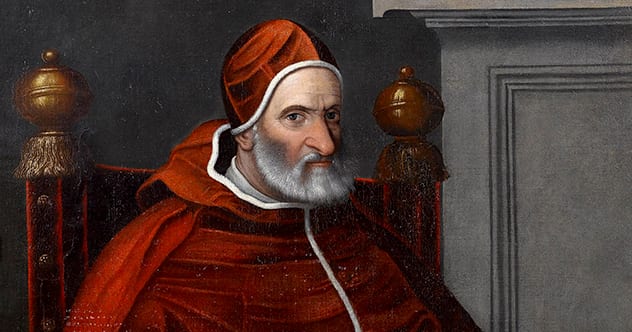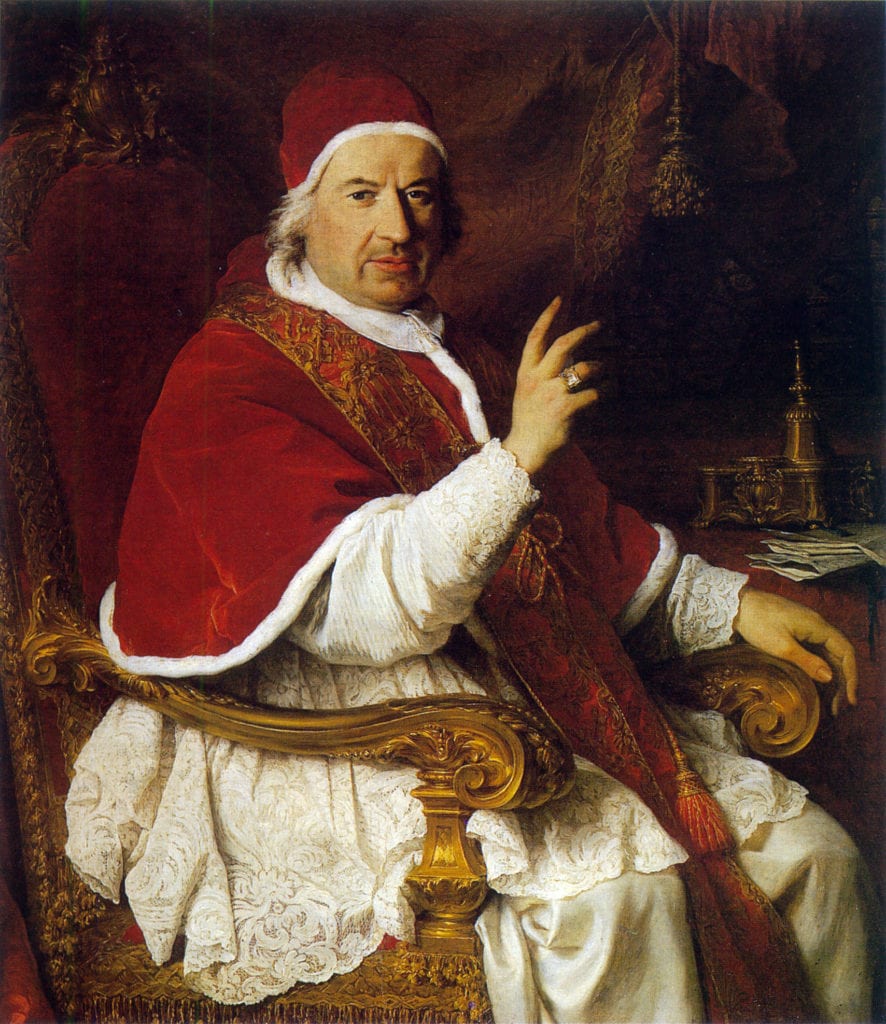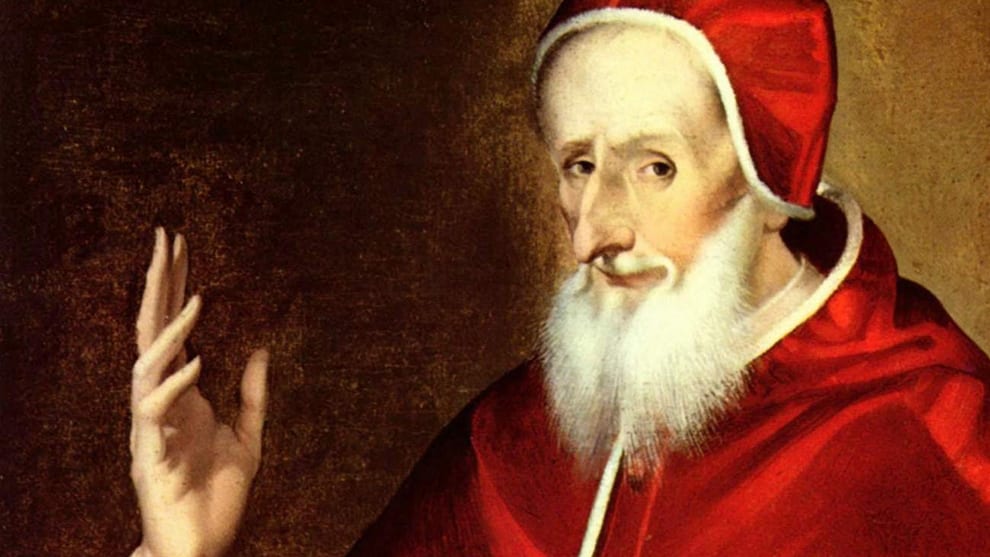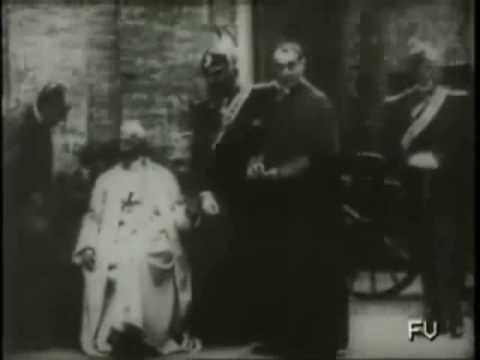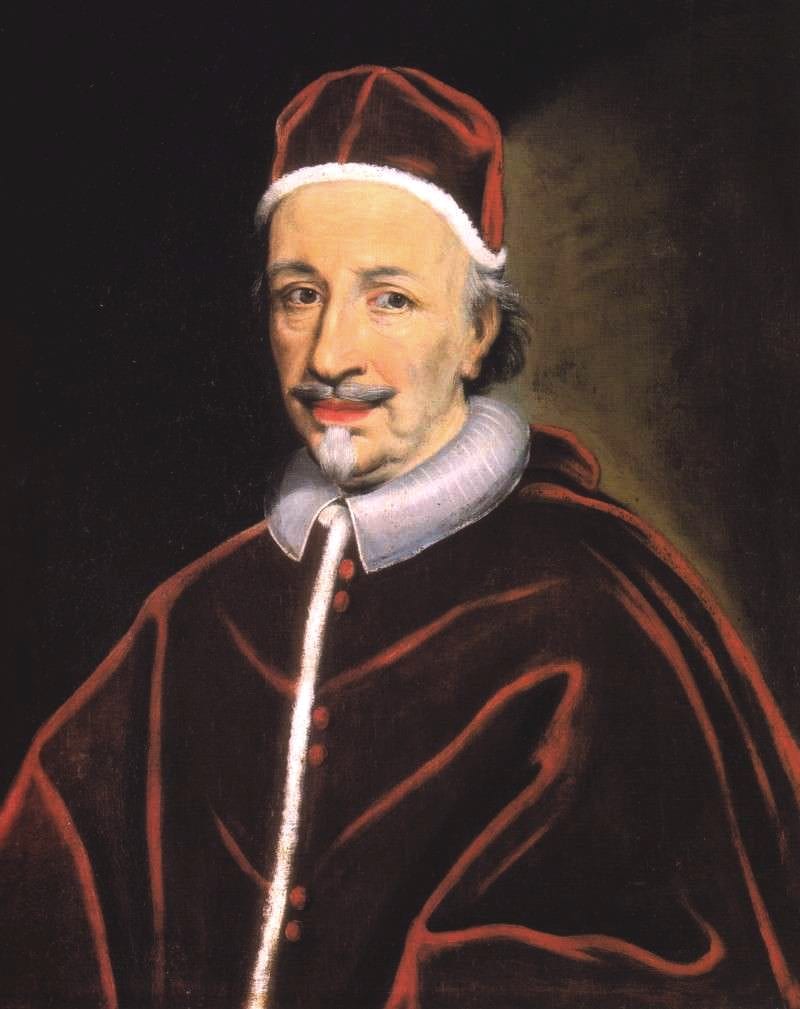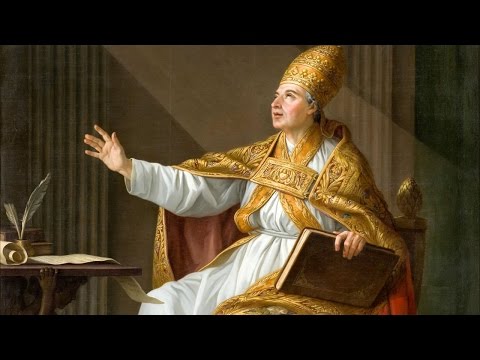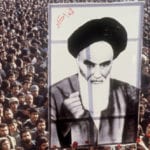Two thousand years ago Jesus Christ established the papacy with Saint Peter as the first Pope; since then numerous popes have overseen positive and stabilising changes. Pope Benedict XV is famous for his work alleviating the impact of the First World War. In the sixteenth century, Pope Pius IV helped reshape Rome, most notably improving the city’s water supply. And, of course, Pope Leo I earned the name Leo the Great for dissuading Attila the Hun from invading Italy. Here are ten popes who, in their own way, made the world a better place. 10 Crazy Badass Popes
10 Pope Benedict XV, the Pope of Peace
The First World War had barely been going for a month when Pope Benedict XV became head of the Catholic Church. The Genoa-born holy man was elected to the Vatican’s top spot in September 1914 following the death of Pope Pius X. He had only been a cardinal for four months at the time. As an archbishop, Benedict had developed a strong distaste for global conflict. It was his belief that the church should act as a peacemaker and help alleviate suffering. He was particularly disgusted by World War I, which he described as “the suicide of civilized Europe.” In fact, he spent over half his papacy attempting to bring the war to an end. In December 2014, he urged the warring countries to hold a truce over Christmas, during which he hoped they could negotiate for peace. Although a truce was never officially called, many troops along the Western front did informally put down their weapons for the festive season. He also used the Vatican to reunite prisoners of war with their loved ones, spending some 82 million lire on relief. Benedict believed that true peace would involve an end to global hostilities and that, after the war, no side should claim compensation. Although he welcomed the end of the war, he claimed that the Treaty of Versailles was “vengeful” and that it did not constitute true peace, only a pause in the bloodshed. In 1920, Muslim Turks built a statue of him in Istanbul, calling him “the great pope of the world tragedy … the benefactor of all people, irrespective of nationality or religion.” Two years later, Pope Benedict XV died suddenly from pneumonia, and went on to be remembered as “the Pope of Peace.”
9 Pope Pius IV who updated Rome’s water supply
Giovanni Angelo Medici was born in Milan around the turn of the sixteenth century. He went on to become pope at the age of sixty. After a four-month selection process, he was elected on Christmas Day 1559. Pope Pius IV resided over the Vatican for the best part of six years. During that time, he made several improvements to the city of Rome, most notably upgrading the water supply. Pius also instructed Michelangelo to build the basilica S. Maria degli Angeli, where his remains are now buried. After his death, the scholar Muratori described him as a man who “had faults (who is without them?)” but who will be remembered for having “enriched Rome by the building of so many fine edifices.”
8 Pope Benedict XIV and his learned institutions
Pope Benedict XIV was one of the most esteemed Catholic leaders of the eighteenth-century so-called “Enlightenment” period. An intelligent scholar, he was born to a noble family in Bologne and served as pope from 1740 to 1758. During that time, he set up four academies for art, science, and religion. He would lecture himself at one of these schools every Monday. He was also known for his generosity to the poor, often wandering into deprived parts of Rome and happily chatting to the locals. At a time when the influence of the Catholic Church was waning, Benedict was highly respected across Europe. Celebrated French writer Voltaire even dedicated one of his works to Pope Benedict XIV – the tragic play Mahomet.
7 Pope Saint Leo I aka Leo The Great
Pope Leo I is one of only three popes to be dubbed ‘the Great’. The other two are Pope Gregory I (who we will hear more from later) and the esteemed recent leader Pope John Paul II. At a time when the church was fragmenting into various factions, Leo managed to hold things together. But perhaps his best-known achievement is convincing Attila the Hun not to invade Italy. In 452 AD, twelve years into Leo’s papacy, Attila posed a dangerous threat to the country. On a savage rampage across Europe, it seemed likely that the fearsome tribal leader would try to pillage Italy. With many Italians fearing incursion, Leo met with Attila near the River Mincio. There, it is said, through words alone he persuaded Attila not to lay siege to the country. Over a thousand years later, Renaissance artist Raphael would paint the legendary meeting as a fresco in the Apostolic Palace.
6 Pope Sixtus IV, a controversial figure
Often in history, you find people who did a certain amount of good and a colossal amount of evil. Pope Sixtus IV is one of those people. Elected to the Vatican in 1471, he helped improve the city of Rome. He widened the streets, built new roads, removed run-down housing, and restored a local hospital. There was even a bridge built in his name. His impact on Vatican City is even more impressive. Sixtus founded both the Vatican Library and the Vatican Archives. Most famous of all, he commissioned the Sistine Chapel, which is named after him. As a lover of the arts, he asked highly-regarded artists like Botticelli to decorate it. And yet, despite all of this, Sixtus IV is remembered as a morally corrupt leader. Some historians reckon he bribed his way into the papacy, where he gained a notorious reputation for nepotism and indulgent spending. He was also involved in a conspiracy to murder the Medici family, who ruled Florence at the time. Giuliano de’ Medici was stabbed to death at Holy Mass, and his brother Lorenzo was seriously injured. Sixtus died in 1484 after thirteen years as pope. His tomb was later destroyed during the Sack of Rome.
5 Pope Saint Pius V, Saved Europe From Islam (For A While)
The Battle of Lepanto was a massive naval battle fought on October 7, 1571 in the gulf separating mainland Greece and the Peloponnese. The Ottoman Empire was intent on dominating the Mediterranean and had recently taken the island of Cyprus from the Venetians. In response, Pope Saint Pius V (the same Pope who excommunicated Elizabeth I of England and declared her a false queen) formed a coalition known as the Holy League, comprising Spain and various Italian states. The Holy League fielded 208 ships against an Ottoman fleet of 230 galleys. The Ottoman fleet must have carried more than 30,000 men, since they lost this many in the battle, and the Christian fleet likely carried a similar amount. Most of the ships were galleys, but the Holy League also fielded six larger galleasses, which had been packed full of artillery. The two fleets eventually stumbled across each other in the Gulf of Patras. There was no real need to engage, but both sides chose to fight. It was the first time the Muslim Turks had seen the new galleasses, which had side-mounted cannons. Mistaking them for merchant vessels, the Turks sailed right up to them to attack. The gigantic ships opened fire, sinking two Turkish galleys immediately. The Ottomans quickly changed their minds and sailed past the galleasses to do battle with the main fleet. The center of the Holy League’s line was nearly broken when several ships of the Holy League sailed off to prevent a Turkish flanking manoeuvre, but they returned just before the Ottomans could exploit the gap and the Spanish reserves soon arrived to turn the tide. The fighting lasted until 4:00 PM, by which point the Turks had been defeated on all fronts, with 210 ships lost against the Holy League’s 51. The spectacular victory crippled the Ottoman navy for a generation.
4 Pope Clement VII who supported Copernicus
Pope Clement VII led the Catholic Church during a tumultuous period. When he took charge in 1523, the church was already in the middle of several crises. Italy was fending off multiple invasions. The Protestant revolution was taking hold across Europe. The church was veering dangerously close to bankruptcy. Amid all that calamity, it is a wonder Clement even had time to improve the world. But he did. In 1533, he approved Nicolaus Copernicus’ theory that the Earth orbits the Sun. According to historians, Clement was a highly intelligent man. He had no difficulty believing in the Solar System. Clement is said to have been so astounded by the theory that he rewarded Copernicus’ uncle with an ancient manuscript.
3 Pope Leo XIII, the labourers’ pope
Pope Leo XIII is affectionately known as the workers’ pope and has a reputation for being a man of the people. Born in the commune Carpineto Romano, the revered holy man ushered in a new era in the papacy. Unlike some of the popes before him, Leo was sympathetic to the issues of the day. He worked to appease civil governments and said that the church should be more open to scientific progress. His papacy lasted from 1878 to 1903, and in 1891 he published his most ground-breaking work. It was titled Rerum Novarum, meaning “of revolutionary change.” Leo saw that the Industrial Revolution had thrown up a number of social issues and the Vatican had a need to respond. The piece concerns “the misery and wretchedness pressing so unjustly on the majority of the working class” and explains the importance of trade unions and protecting workers’ rights. This was the first time any pope had written about the need for state intervention in maintaining Catholic social justice. Pope Leo XIII was the first Vatican leader to use the phrase “Christian democracy.” Leo’s pivotal work paved the way for a shift in the relationship between the church and Christian societies in the twentieth and twenty-first centuries. The clip above is the oldest film of a Pope. Pope Leo reigned for a further eight years after this footage was captured.
2 Pope Innocent XII stamps out nepotism
Antonio Pignatelli, later known as Pope Innocent XII, is known for his unprecedented papal reforms. Born to an aristocratic family in Naples, he became pope in 1691 following riotous clashes in Rome. As head of the Catholic Church, he set up charitable institutions to care for poor children. He opened the Lateran, which had previously been a home for the pope, as a refuge center for the unemployed. He even used money from the Vatican to help victims of natural disasters, including the flooding of the River Tiber. It is said that many of the people thought of him as a father figure and that he referred to them as his nephews. But Pope Innocent XII is best remembered for his reforms to the long-standing nepotism of the Catholic Church. Along with future pope Giovanni Albani, he brought in a decree banning any pope from bestowing estates, offices, or revenues upon family members. He was the last Pope to wear decorative facial hair.
1 Pope Saint Gregory I aka Saint Gregory the Great
Pope Gregory I, better known as St. Gregory the Great, was a pioneer of Medieval Catholicism. One of the four Latin Fathers of the Church, he was elected to the position of pope in 590 AD. At the time Italy was in turmoil, and Gregory accepted the post unwillingly. As a leader, Gregory urged his deacons to become servants of the poor, instructing them to donate food and money in the form of alms. Any of the clergy who would not join his altruistic mission was quickly replaced. A generous man himself, he regularly donated money from the church to those in need. On occasion, he would even liquidate some of the church’s assets to help the needy. When a famine struck Rome during his papacy, he ordered the clergy to give free food to the starving people, refusing to eat until they returned. Gregory served as pope for fourteen years before his death in 604 AD. For his incredible kindness of heart, he was made a saint immediately. Top 10 Papal Conspiracy Theories
